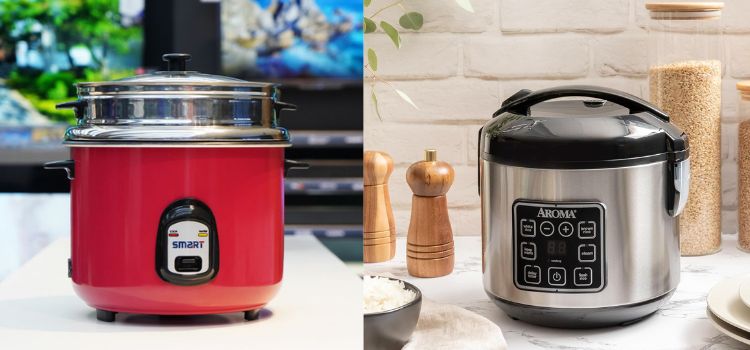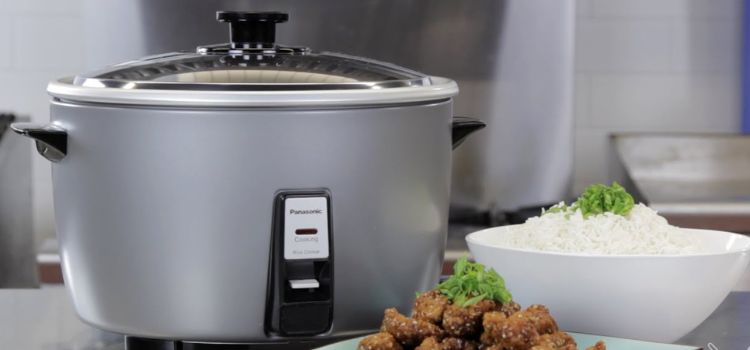As an Amazon Associate, I earn from qualifying purchases

Barley is an ancient grain that has stood the test of time, cherished for its nutty flavor, chewy texture, and impressive nutritional profile. High in fiber, vitamins, and minerals, barley is a powerhouse ingredient that supports heart health, aids digestion, and helps maintain stable blood sugar levels. Its versatility allows it to shine in a variety of dishes, from hearty soups and stews to refreshing salads and creamy risottos. As more people embrace healthier eating habits, barley’s popularity continues to rise, making it a staple in health-conscious kitchens around the world.
With the ever-evolving landscape of cooking appliances, the rice cooker emerges as a convenient tool for preparing grains beyond rice. This article will guide you through the process of cooking barley in a rice cooker, highlighting the benefits of using this handy appliance, offering a step-by-step guide, and addressing potential challenges to ensure perfect results every time.
Advantages of Using a Rice Cooker for Barley
- Convenience and Ease: One of the primary benefits of using a rice cooker to prepare barley is the convenience it offers. Unlike the stovetop method, which requires constant monitoring and stirring, a rice cooker allows for a hands-free cooking experience. Simply add your ingredients, set the cooker, and let it work its magic while you tend to other tasks.
- Consistent Results: Rice cookers are designed to cook grains evenly, regulating temperature and moisture to achieve a consistent texture. This is particularly important for barley, as its chewy texture can vary depending on how it’s cooked. A rice cooker ensures each grain absorbs the right amount of moisture, resulting in perfectly cooked barley every time.
- Energy Efficiency: Compared to traditional stovetop methods, rice cookers are more energy-efficient. They maintain optimal cooking temperatures without overheating your kitchen, making them an ideal choice for those looking to conserve energy and maintain a comfortable cooking environment.
Step-by-Step Guide to Cooking Barley in a Rice Cooker

- Preparation: Start by rinsing the barley thoroughly under cold water. This step is crucial as it removes any dust, debris, or excess starch that can affect the texture of the final dish. Once rinsed, drain the barley well.
- Cooking: Measure the barley and water, using a typical ratio of 1 cup of barley to 3 cups of water or broth. You can adjust the liquid slightly depending on your texture preference. Place the rinsed barley and liquid into the rice cooker.
- Enhancing Flavor: Consider substituting some of the water with vegetable or chicken broth to add depth of flavor. You can also enhance the barley by adding a pinch of salt, a splash of olive oil, or herbs and spices like bay leaves, thyme, or garlic.
- Cooking Time and Settings: Select the setting closest to ‘brown rice’ or ‘whole grains’ on your rice cooker, as these settings usually provide the appropriate cooking times and temperatures for barley. Allow the cooker to run its cycle.
- Resting: Once the cooking cycle is complete, let the barley rest in the cooker for a few minutes. This resting period allows the grains to absorb any remaining moisture, ensuring a fluffy and tender texture.
Potential Challenges and Solutions
Cooking barley in a rice cooker is generally straightforward, but a few challenges might arise:
- Overcooking: Barley can become mushy if overcooked. To prevent this, use the correct water-to-barley ratio and monitor the cooking process if your rice cooker allows for it. Some experimentation may be necessary to find the perfect balance for your specific cooker.
- Texture Issues: Achieving the right texture is crucial, as barley’s chewiness is part of its appeal. If the barley is too chewy, increase the water slightly or extend the cooking time. Conversely, if it’s too soft, reduce the water or cooking time on your next attempt.
- Barley Variations: Different types of barley, such as hulled or pearl, may require slight adjustments in cooking time and water ratios. Hulled barley, being less processed, may take longer to cook compared to pearl barley, which has had the outer husk removed.
Conclusion
Cooking barley in a rice cooker combines the benefits of modern convenience with the wholesome goodness of this ancient grain. The advantages of using a rice cooker, from ease of use to consistent results, make it an excellent choice for anyone looking to incorporate barley into their meals effortlessly.
By following the steps outlined in this guide, you can master the art of cooking barley, adding a nutritious and versatile ingredient to your culinary repertoire. Whether you’re a novice cook or a seasoned chef, exploring barley with the help of a rice cooker is a rewarding and delicious endeavor. So next time you’re planning a meal, consider reaching for barley and let your rice cooker do the work, delivering perfectly cooked grains that enhance any dish.
FAQ
Can I cook barley in my rice cooker?
Yes, you can cook barley in a rice cooker. It’s a convenient method that ensures even cooking and a consistent texture. Simply rinse the barley, place it in the cooker with the right water ratio, and select the appropriate setting, usually similar to brown rice or whole grains.
What is the ratio of water to barley?
The typical water-to-barley ratio is 3:1, meaning three cups of water for every cup of barley. This ratio helps achieve a tender, fluffy texture. Adjust the water slightly for personal preference, ensuring the barley cooks to your desired consistency, whether you prefer it chewier or softer.
Do you need to soak barley before cooking?
No, soaking barley before cooking in a rice cooker is not necessary. However, rinsing it under cold water is recommended to remove any impurities and excess starch. For hulled barley, which is less processed, soaking can reduce cooking time, but it’s optional and depends on your preference.
As an Amazon Associate, I earn from qualifying purchases